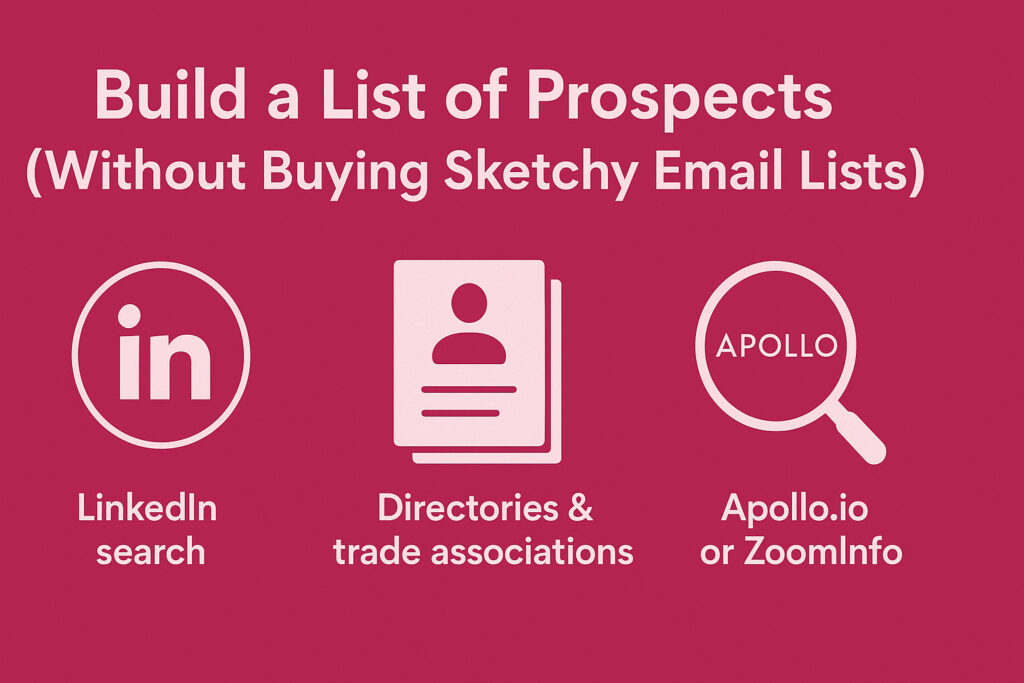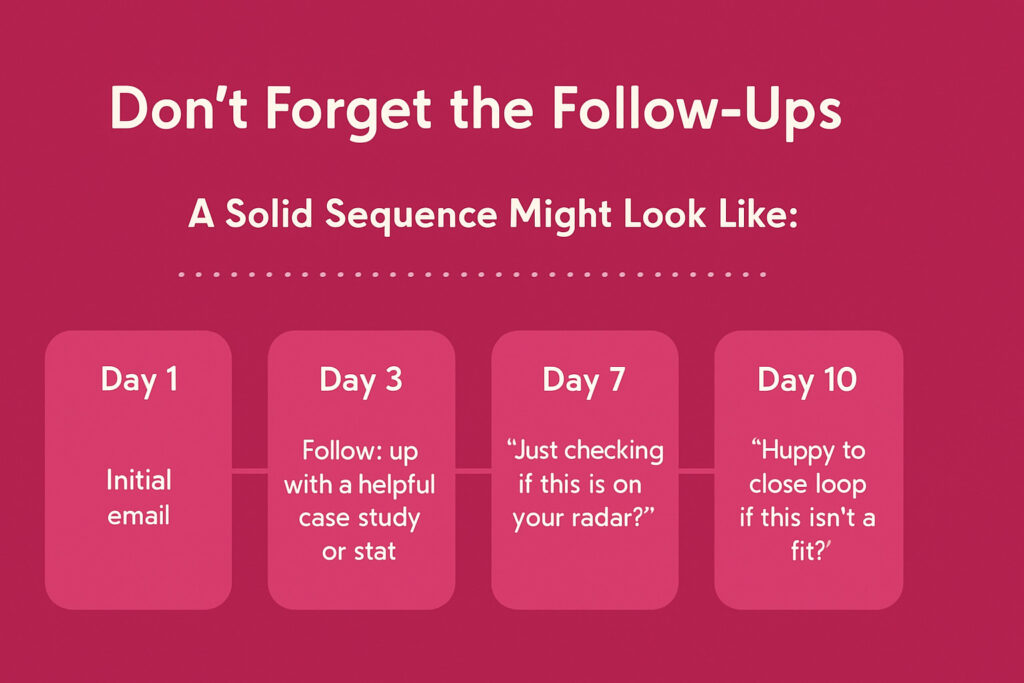
Selling industrial machinery isn’t like selling sneakers or software subscriptions.
These are big-ticket items with long sales cycles and multiple decision-makers. In a world full of flashy marketing tactics, cold outreach may seem like an old-school approach. But the truth? When done right, it still works. Especially in the B2B industrial space.
So, if you’re an industrial machinery manufacturer (or work with one) and want more leads in the pipeline, this guide’s for you. I’ll walk you through a cold outreach strategy that feels human, adds value, and actually gets replies.
Why Cold Outreach Still Works in the Industrial Sector
Before we dive in, let’s address the elephant in the room: “Isn’t cold outreach spammy?”
It can be. But that’s only if you’re blasting generic messages to the wrong people. When done thoughtfully, cold outreach can:
- Reach decision-makers directly (think plant managers, procurement heads, operations directors)
- Start meaningful conversations without relying on paid ads
- Generate high-intent leads who are actually in the market
Now, let’s break down how to make this work in the world of industrial machinery with some case studies.
How To Get Leads For Industrial Machinery Manufacturers?
Step 1: Know Exactly Who You’re Targeting
The first step is figuring out who you want to talk to. And no, “anyone in manufacturing” isn’t specific enough.
Your Ideal Client Might Be:
- A plant manager at a mid-sized factory looking to upgrade outdated equipment
- A procurement officer responsible for sourcing machinery
- A maintenance director tired of constant breakdowns
Bonus Tip:
Use LinkedIn, directories, or trade association websites to find real names and job titles. The more specific you are, the better your results.
Step 2: Build a High-Quality Prospect List
Now that you know who you’re targeting, it’s time to find them.
Where to Find Leads:
- LinkedIn Sales Navigator – Filter by industry, company size, title, etc.
- ThomasNet – A goldmine for manufacturers and industrial suppliers.
- Trade Shows & Conferences – Look at past attendee/exhibitor lists.
- Company Websites – Look for staff directories or “Meet the Team” pages.

Collect names, emails, job titles, company size, and location. Try to find 100–500 solid prospects before launching your campaign.
Step 3: Set Up Cold Outreach Infrastructure
Before you hit “send,” make sure you’re all set up to do this safely and efficiently.
What You Need:
- Email Sending Tool (e.g., Instantly, Lemlist, Mailshake)
- Cold Outreach Domain (don’t use your main company domain!)
- Email Warm-up Tools to increase deliverability
- Basic Website or Landing Page that builds credibility
Your goal here is to look trustworthy and avoid spam folders.
Step 4: Craft Cold Emails That Actually Get Replies
Here’s where most campaigns fail. Industrial folks aren’t looking for fluff. They’re practical. They care about how your machinery helps them get better output, reduce downtime, or cut costs.
A Good Cold Email Should Be:
- Short (under 120 words)
- Personalized (“Saw you recently upgraded your packaging line…”)
- Problem-aware (“Many factory owners we speak with struggle with production delays due to older machinery.”)
- Focused on value, not features
Example Email:
Subject: Reducing downtime in your assembly line?
Hi [First Name],
I work with manufacturers like [Company Name] to help reduce equipment failure and streamline output using custom-built [Machine Type].
Would it make sense to have a quick chat next week? Even 10 minutes could uncover a few opportunities.
– [Your Name]
Keep it human. You’re not selling yet. You’re just opening a conversation.
Step 5: Don’t Forget the Follow-Ups
Most responses won’t come from the first email. That’s normal.
A Solid Email Follow Up Sequence Might Look Like:
- Day 1: Initial email
- Day 3: Follow-up with a helpful case study or stat
- Day 7: “Just checking if this is on your radar?”
- Day 10: “Happy to close the loop if this isn’t a fit.”

The tone should be polite, not pushy. Think of it as nudging a colleague, not closing a hard sale.
Step 6: Track, Tweak & Improve
Once you’re running your campaign, track performance:
- Open Rate > 40% = Subject lines are working
- Reply Rate > 8% = Messaging is on point
- Meeting Rate > 3% = You’re booking real opportunities
Not getting results? Try:
- A/B testing subject lines
- Tweaking your value prop
- Targeting a different job title or industry vertical
Bonus: Combine Cold Outreach with LinkedIn
Before you email someone, connect with them on LinkedIn. Or view their profile so your name rings a bell. Sometimes a simple connection + message + email sequence can warm them up faster.
You can even post content related to your machines, client results, or trends in automation to build trust over time.
What Makes This Work for Industrial Manufacturers?
Cold outreach isn’t new, but it’s underused in traditional sectors like manufacturing. That’s your advantage. Most competitors are relying on trade shows, referrals, or inbound leads. You, on the other hand, are creating demand.
Plus, industrial buyers are logical. They want to talk when there’s real value, real data, and real ROI.
Final Thoughts
At the end of the day, cold outreach for industrial machinery isn’t about spamming inboxes. It’s about starting conversations with the right people, at the right companies, who might actually need what you offer.
If you take the time to personalize, offer real value, and stay consistent, you’ll not only generate leads—you’ll create long-term business relationships that drive revenue.
What’s the most cost-effective way to generate industrial leads?
Cold emailing remains one of the most effective channels. If your targeting and messaging are dialed in. Combine it with SEO and LinkedIn outreach for stronger compounding effects.
Do industrial buyers really use social media?
Yes, but not casually. Platforms like LinkedIn are actively used by procurement officers, engineers, and plant managers. Just don’t treat it like Instagram—share valuable technical insights instead.
Should I invest in PPC or focus on organic traffic?
Do both if possible. PPC gives you quick visibility, especially for high-intent keywords like “buy CNC machine.” But long-term ROI often comes from well-optimized technical content and SEO.


